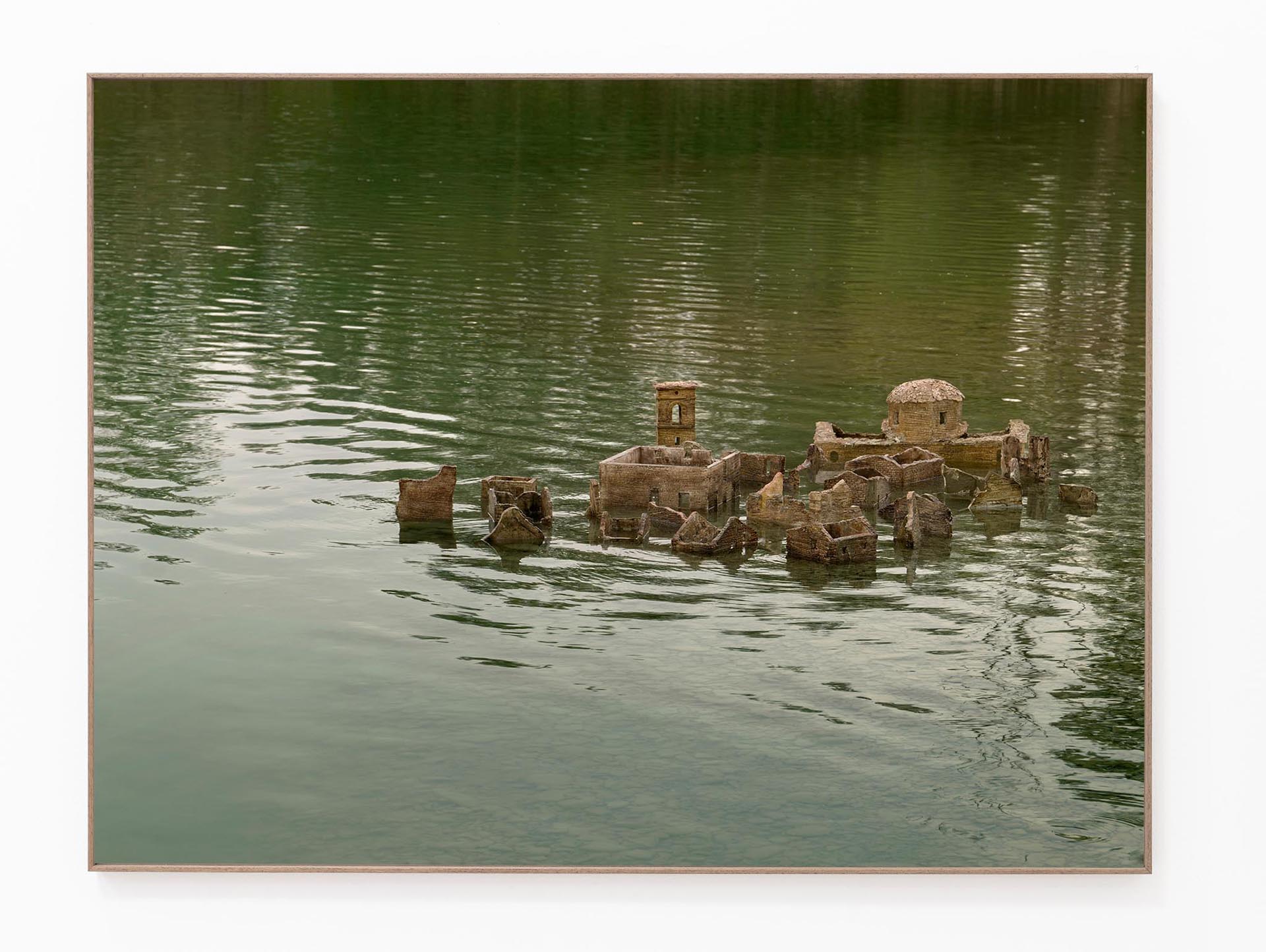Silvia Camporesi © 2020
Rose Island, 2020
Inkjet print on Canson paper, mounted on dibond,
with Nielsen Natura 34 frame and museum glass
cm 120×90
edit. 5 + 2 a.p.
Inkjet print on Canson paper, mounted on dibond,
with Nielsen Natura 34 frame and museum glass
cm 120×90
edit. 5 + 2 a.p.
Forcing the landscape
The illusory potential of photography, which marks the research of Silvia Camporesi, is articulated and developed through the suggestions of three Italian places which, due to their characteristics, respond to particular features of uncommon or unusual and in which belongs a specific forcing of the landscape, a radical intervention that has changed the fate of the place in itself.
Three environments documented through photographs, videos and archive materials that highlight the ambiguity between reality and fiction, the need to search for fragments of memories, the consequences of a certain unbridled anthropization and the curiosity that is hidden in contexts on the edges of normality.
The “Isle of Roses”, an artificial platform of 400 m² which stood in the Adriatic Sea 11.612 km off the coast of Rimini and 500 m outside the Italian territorial waters.
Three environments documented through photographs, videos and archive materials that highlight the ambiguity between reality and fiction, the need to search for fragments of memories, the consequences of a certain unbridled anthropization and the curiosity that is hidden in contexts on the edges of normality.
The “Isle of Roses”, an artificial platform of 400 m² which stood in the Adriatic Sea 11.612 km off the coast of Rimini and 500 m outside the Italian territorial waters.
The Mirror of Viganella, a town of 200 inhabitants in the Antrona Valley (VCO Province). From 11 November to 2 February of each year, for 83 days, the town is in total absence of sun due to the opposite mountain. For this reason, in 2006 the then mayor Franco Midali and he architect Giacomo Bonzani decided to build a 40 square meter mirror nearby the town, capable of reflecting sunlight in the direction of the valley, even in the dark months. Finally, the town of Fabbriche di Careggine. A ghost town in the province of Lucca, in the municipality of Vagli Sotto, abandoned in 1947 and then submerged by the waters of the artificial lake of Vagli formed following the construction of a hydroelectric dam. Lake Vagli, the largest hydroelectric basin in Tuscany, has been emptied for maintenance on four occasions, the last one in 1994. Since then, the town of Fabbriche di Careggine has never seen the light.
(Excerpt from Angel Moya Garcia’s text to “Forcing the landscape”, Silvia Camporesi’s solo show at z2o Sara Zanin, Rome, 2020)
Silvia Camporesi © 2020
Insulo de la Rosojo (postcard), 2020
Inkjet print on Canson paper + passe-partout,
mounted on dibond, with wood frame
cm cm 40×30
edit. 5 + 2 a.p.
Inkjet print on Canson paper + passe-partout,
mounted on dibond, with wood frame
cm cm 40×30
edit. 5 + 2 a.p.
Silvia Camporesi © 2020
The reflected sun (polyptych), 2020
4 inkjet prints on Canson paper, mounted on dibond,
with Nielsen Natura 34 frame and museum glass
(2 cm 60×80 , 2 cm 60×40, totale cm 180×80)
edit. 5 + 2 a.p.
4 inkjet prints on Canson paper, mounted on dibond,
with Nielsen Natura 34 frame and museum glass
(2 cm 60×80 , 2 cm 60×40, totale cm 180×80)
edit. 5 + 2 a.p.
Silvia Camporesi © 2020
17th Dicember 2006, 2020
Pencil drawing on paper with
passe-partout and wood frame
cm 40×30
unique piece
Pencil drawing on paper with
passe-partout and wood frame
cm 40×30
unique piece
Silvia Camporesi © Copyright 2022 – All Rights Reserved
Cookie Policy | Privacy Policy
No images may be copied or downloaded without express permission from the artist.
Cookie Policy | Privacy Policy
No images may be copied or downloaded without express permission from the artist.

















